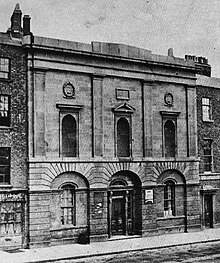
The National Museum of Ireland is Ireland's leading museum institution, with a strong emphasis on national and some international archaeology, Irish history, Irish art, culture, and natural history. It has three branches in Dublin, the archaeology and natural history museums adjacent on Kildare Street and Merrion Square, and a newer Decorative Arts and History branch at the former Collins Barracks, and the Country Life museum in County Mayo.
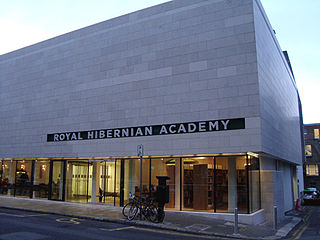
The Royal Hibernian Academy of Arts (RHA) is an artist-based and artist-oriented institution in Ireland, founded in Dublin in 1823. Like many other Irish institutions, such as the Royal Irish Academy, the academy retained the word "Royal" after most of Ireland became independent as the Irish Free State in December 1922.

Sarah Henrietta Purser RHA was an Irish artist mainly noted for her portraiture. She was the first woman to become a full member of the Royal Hibernian Academy. She also founded and financially supported An Túr Gloine, a stained glass studio.

The Royal Scottish Academy (RSA) is the country’s national academy of art. It promotes contemporary Scottish art.
Samuel Walsh is an Irish abstract artist. He is a member of Aosdána, founder of the National Collection of Contemporary Drawing and is closely associated with the beginnings of EVA International. Born in London in 1951 to Irish parents, he moved to Limerick, Ireland in 1968, where he resided until 1990. He now lives and works in Co. Clare.
Henry Albert Hartland was an Irish artist known for his watercolours and landscape paintings.
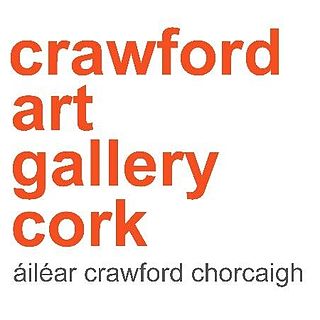
The Crawford Art Gallery is a public art gallery and museum in the city of Cork, Ireland. Known informally as the Crawford, it was designated a 'National Cultural Institution' in 2006. It is "dedicated to the visual arts, both historic and contemporary", and welcomed 265,438 visitors in 2019. The gallery is named after William Horatio Crawford.

Joseph Malachy Kavanagh was an Irish painter. He is known for his painting landscapes, seascapes, rural scenes in Ireland, France and Belgium and occasional portraits. He particularly was inspired by the landscape in and around Dublin.
Neil Shawcross, RHA, HRUA is an artist born in Kearsley, Lancashire, England, and resident in Northern Ireland since 1962. Primarily a portrait painter, his subjects have included Nobel prize winning poet Seamus Heaney, novelist Francis Stuart, former Lord Mayor of Belfast David Cook, footballer Derek Dougan and fellow artists Colin Middleton and Terry Frost. He also paints the figure and still life, taking a self-consciously childlike approach to composition and colour. His work also includes printmaking, and he has designed stained glass for the Ulster Museum and St. Colman's Church, Lambeg, County Antrim. He lives in Hillsborough, County Down.

Bernard Mulrenin, was an Irish painter best known for his miniatures.
Samuel McCloy was an Irish artist who trained at Belfast School of Design and later at Somerset House. He exhibited widely in group shows across the British Isles and was known for his watercolours, genre paintings, still-life and landscapes. McCloy was also a commercial designer, illustrator, and an educator who was for a time Master at Waterford School of Art.
Henry Allan was an Irish painter.

Sarah Cecilia Harrison was an Irish artist and the first woman to serve on Dublin City Council.

John Smyth (1776–1840) was an Irish sculptor.
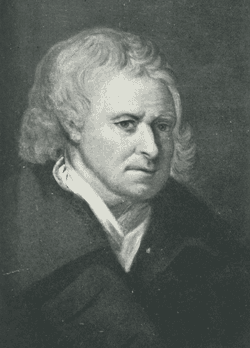
John Henry Campbell was a landscape painter.
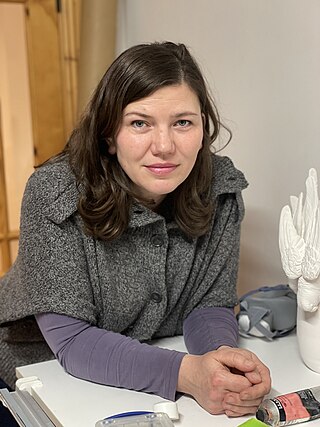
Vera Klute ARHA is a contemporary artist based in Ireland since 2001.
Abigail O'Brien,PHRA, is a contemporary Irish artist and the first female president of the Royal Hibernian Academy since its establishment in 1823. O'Brien's work explores themes such as ritual, rites of passage, and the domestic realm. O'Brien is best known for her multi-media installations featuring photography, video, sculpture, 3D printing, sound, inflatables, embroidery and handmade objects.
The National Self-Portrait Collection of Ireland is a collection of more than 400 self-portraits of Irish artists which is housed in the Kneafsey Gallery at the University of Limerick.
City Assembly House is a Georgian gallery, exhibition space and office developed by the Society of Artists in Ireland as a purpose built venue to hold exhibitions and display the works of Irish artists. It is often claimed to have been the first purpose built art gallery in either the UK or Ireland.

George Atkinson was an Irish designer, printmaker, painter, and educator. Born in County Cork, Ireland, he became the director of the National College of Art in Dublin and played a significant role in the development of art education and the arts and crafts movement in Ireland during the early 20th century.
